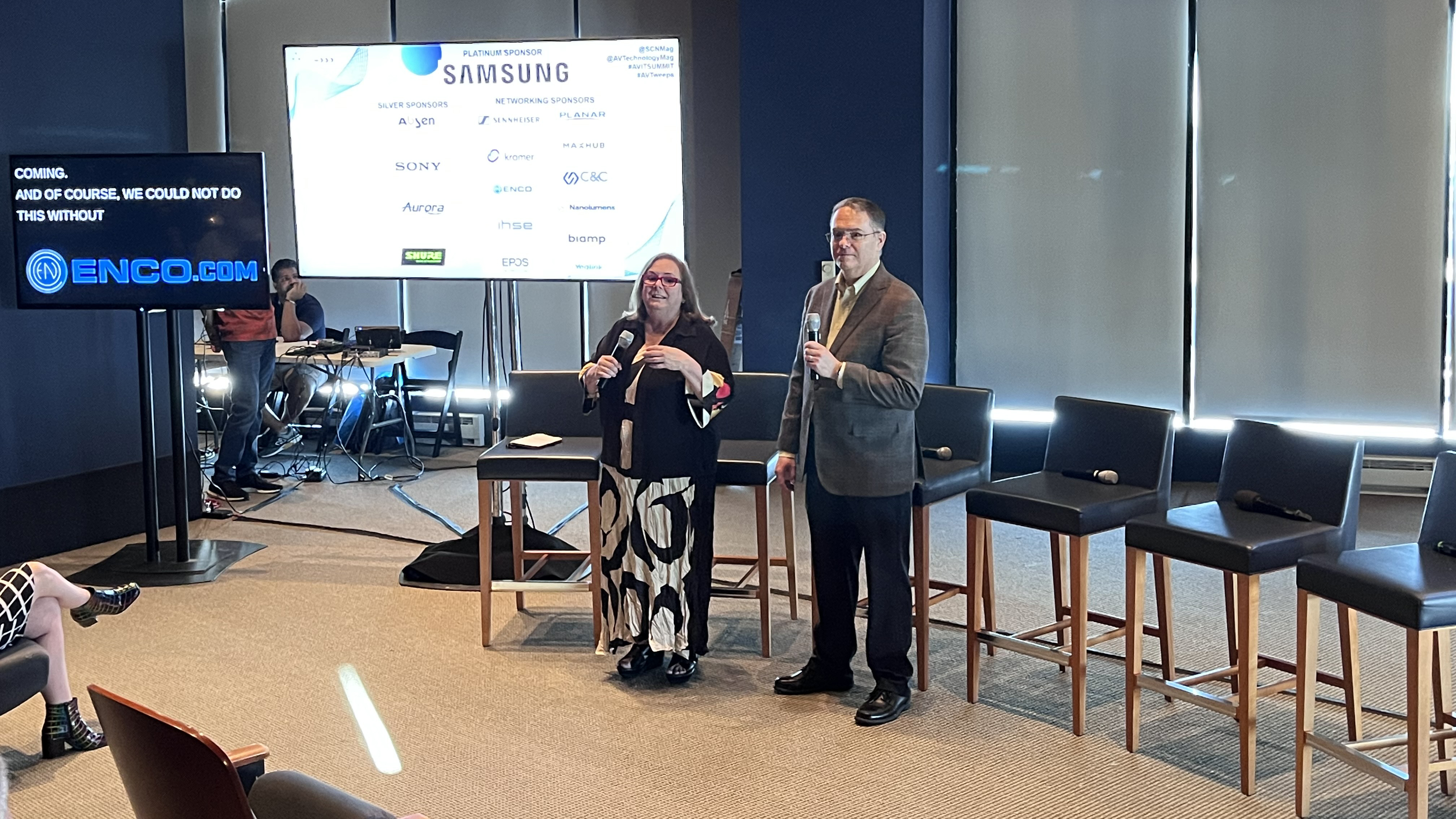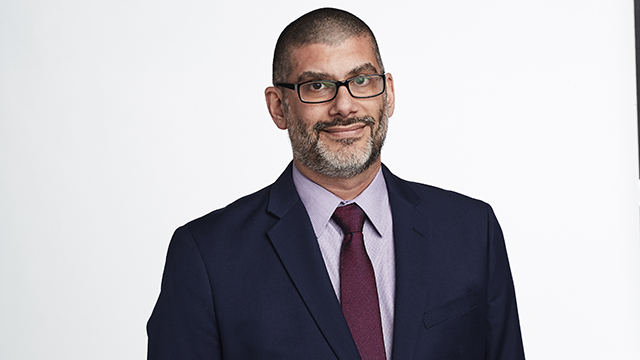The 2022 AV/IT Summit was held at Citi Field in Flushing, NY. The home of the New York Mets is amid one of the most extensive technological upgrades in all MLB, an upgrade that will continue to evolve throughout the season and into next.
Some of the Pro AV and IT industry’s most knowledgeable sources joined AV Technology’s Cindy Davis and SCN’s Mark J. Pescatore to take a look at where AV and IT are headed and some of the challenges to get there.
The Rise of Esports
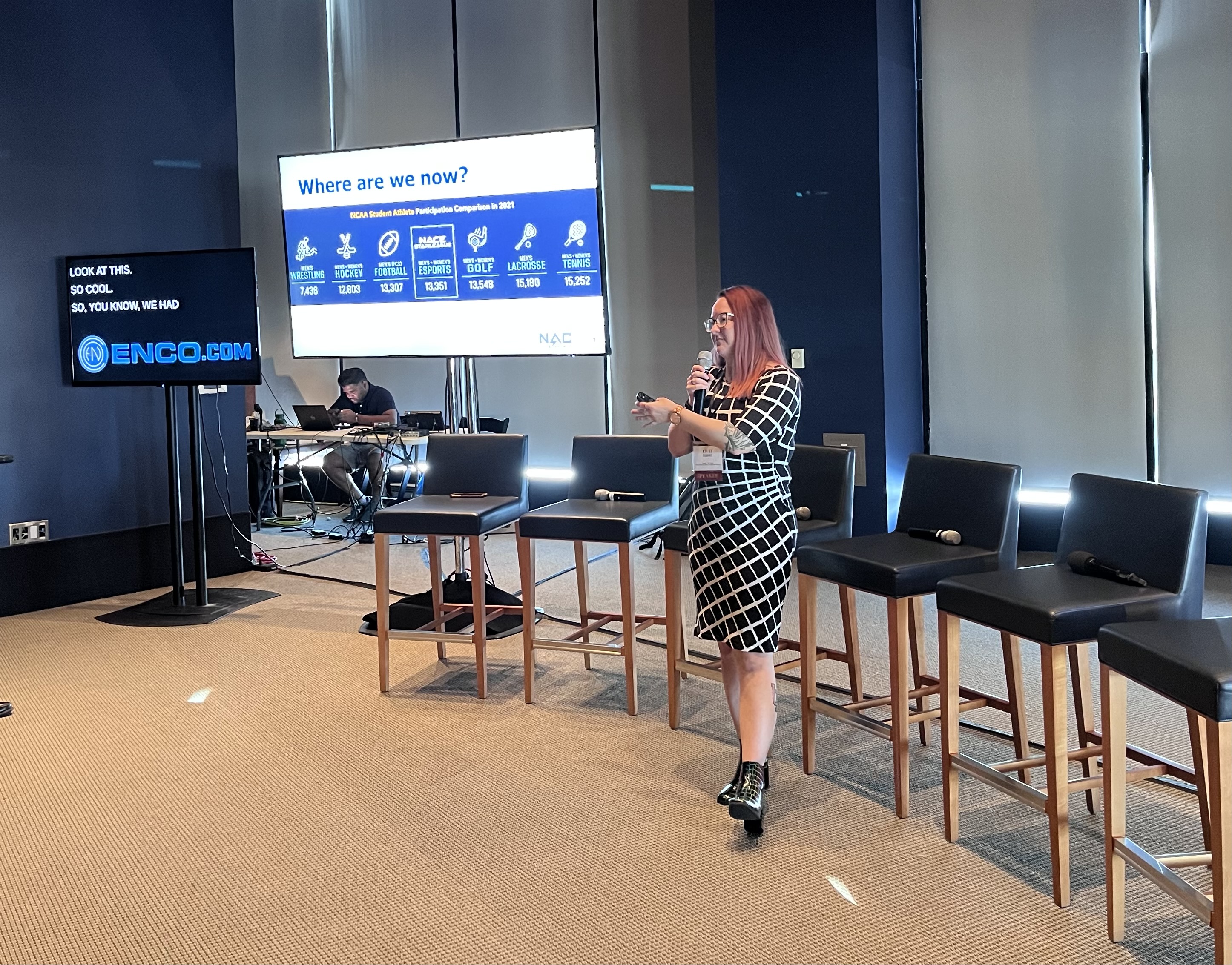
Keynote speaker Ashley “AJ” Jones, director of membership sales and services for the National Association of Collegiate Esports (NACE), started the event with a look at the rise of Esports. What was once a club sport on the NAIA on Division II and III levels has transformed to a varsity sport connecting universities throughout the nation.
[Esports: Has Your College Levelled Up?]
Jones took attendees on a virtual tour around some of the facilities including Boise State’s broadcast and production studios and Full Sail University’s top-notch Esports arena that features arena seating, bleacher seating, multiple video walls for audience viewing, and an impressive LED halo display that shows player cards and stats.
The takeaway? More Division I schools are joining the party. Accessibility makes it easier to watch your favorite team play your favorite game, but keeping up with the evolution is a must. Mobile gaming is growing, and high-level varsity programs are beginning to create additional opportunities with the programs outside of competition, which means it’s time to keep these “arenas” up to date with the latest technologies.
Optimize Your Hybrid Meetings
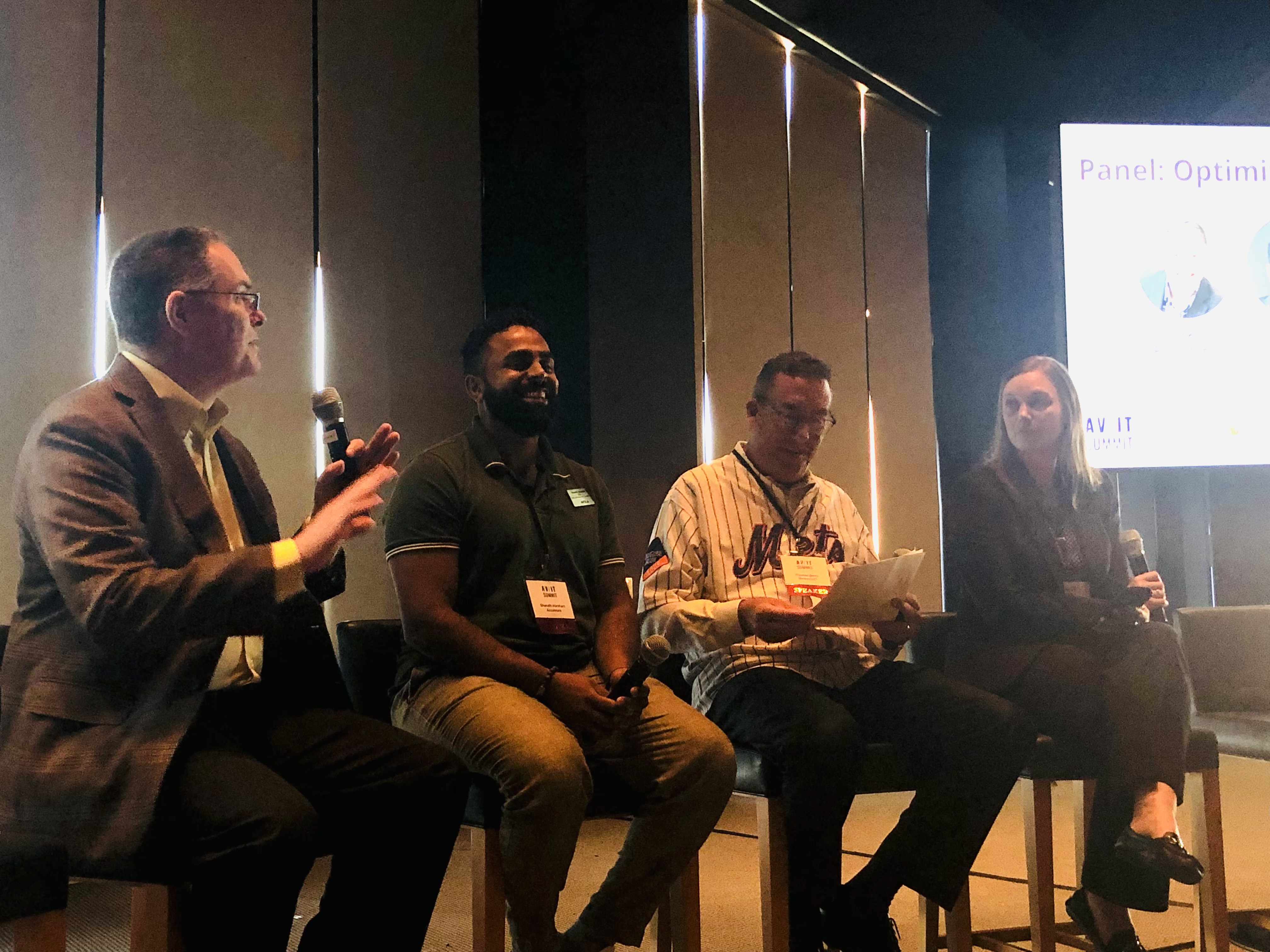
Pescatore hosted the panel with Sharath Abraham, digital workplace consultant at Accenture, Thomas Berry, CEO of Verrex, and Vanessa Jensen, market development at Shure. The four took attendees around the world of hybrid meetings and many of the challenges that are being met.
As Jensen noted, AI and machine learning technologies are moving quickly with capabilities that drown out unwanted sounds, and there are now aesthetically pleasing solutions—ceiling mics and speakers for example—which don’t even require a desktop for setup.
[SCN Hybrid World: Workplace Products and Expert Tips]
The huddle room was the place to be prior to the pandemic. That really hasn’t changed, according to Berry, but it has been reimagined. Every huddle room now has a display, speaker, and microphone. While the goal of the huddle room remains the same, the technology will continue to evolve.
Abraham added perhaps the most important takeaway from this session: It is imperative to create a technology cheat sheet and train employees to get the most out of huddle rooms. How often do employees participate in a meeting on their laptop instead of using all the technology available to them in the space? To optimize those huddle rooms, the key is to figure out how to train all those generational group and support them as the technology evolves.
Videoconferencing and Collaboration for IT Directors
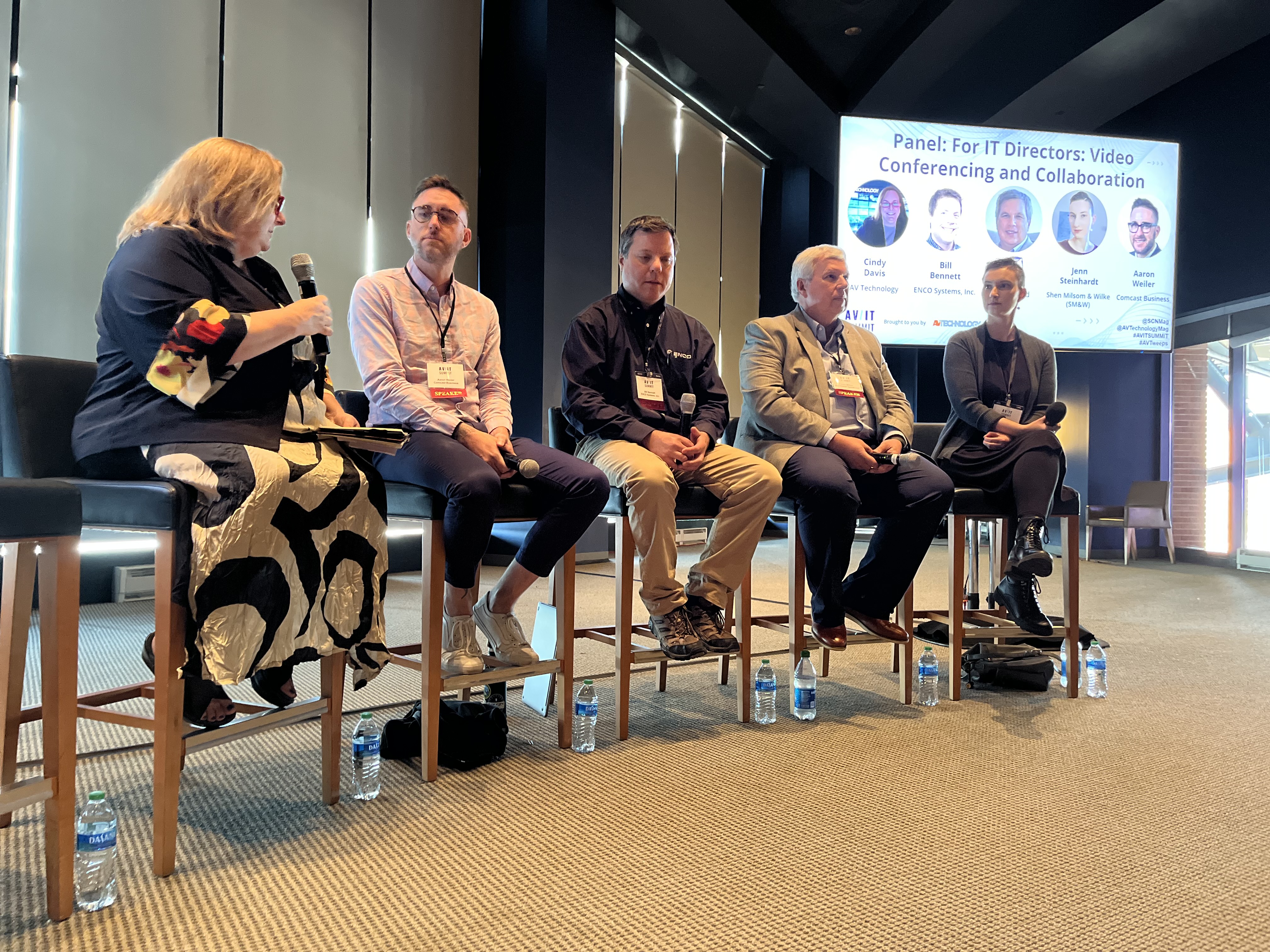
To discuss some of the challenges that face IT during the return to the workplace, Davis was joined by Bill Bennett, media solutions and account manager at ENCO, John Mitton, CP of the AV group at Red Thread Spaces, Jenn Steinhardt, associate AV designer at Shen Milsom & Wilke (SM & W), and Aaron Weiler, senior enterprise engineer at Comcast Business.
The pressure is on IT directors to answer questions that may not have clear answers yet. Companies have to have a purposeful plan and strategy to get people back to the office—and the IT challenge is making that strategy compelling, or “sexy,” as Weiler said. Expectations are higher than ever, and the employee expects that when they walk into a room, it should function as easily as it does at home.
Citi Field Digital Experience
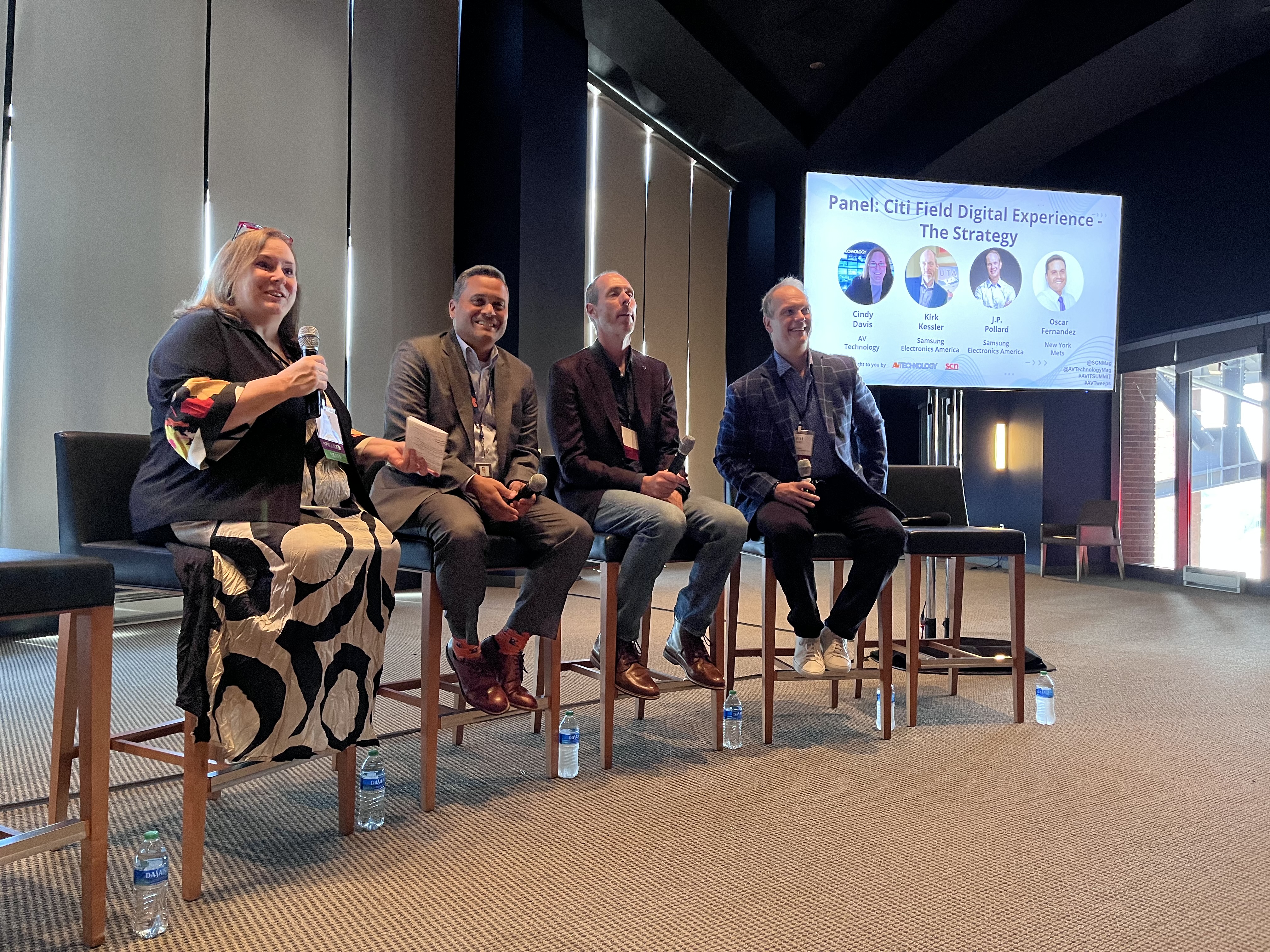
Davis hosted Kirk Kessler, sales manager of live events for Samsung Electronics, J.P. Pollard, head of live events, entertainment, sports, and spectaculars at Samsung Electronics, and Oscar Fernandez, vice president, technology solutions for the New York Mets, as attendees for this panel learned all about the technological advances at Citi Field.
[Home Run: A Look Back at 5 Big League Pro AV Upgrades for 2022]
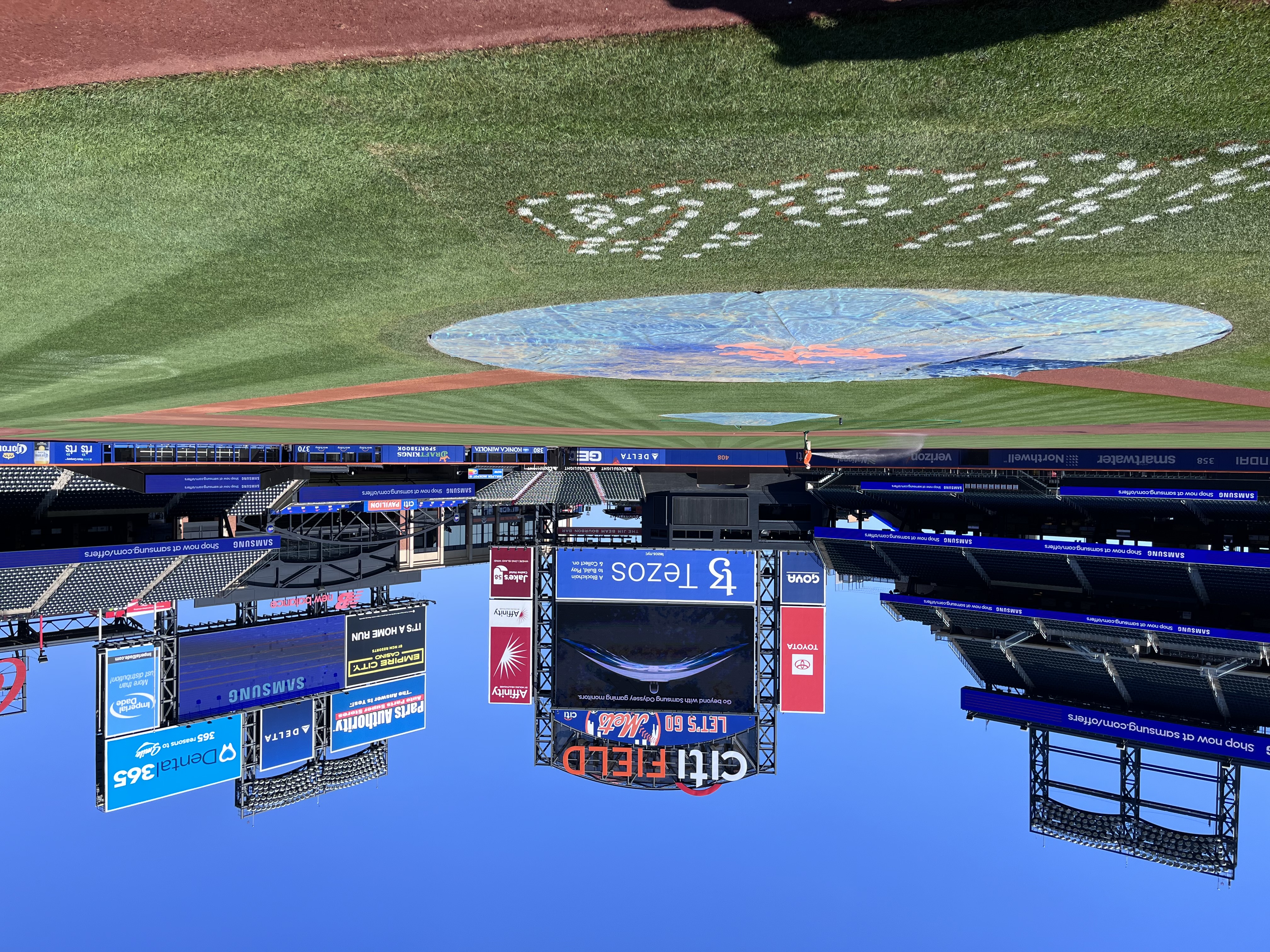
The takeaway? Citi Field is awesome. Not only is the stadium and field a sight to see, but the technology is arguably setting the standard for MLB stadiums across the land. As Kessler said, the Samsung and Mets partnership was a shared vision, and they are achieving a common goal to enhance the fan experience while keeping the focus on the game (not obtrusive technology).
There are already five levels of LED ribbons and hundreds of displays installed, but it is just the beginning. Most recently, the Jackie Robinson Rotunda was updated with displays that feature the lineup and a ribbon that provides stats of the starting pitcher. The displays themselves are also a gateway of communication. They communicate content or game moments, menus, or directions to a store or attraction within the stadium. One of the end goals is to have personal devices be able to be used in conjunction with the system.
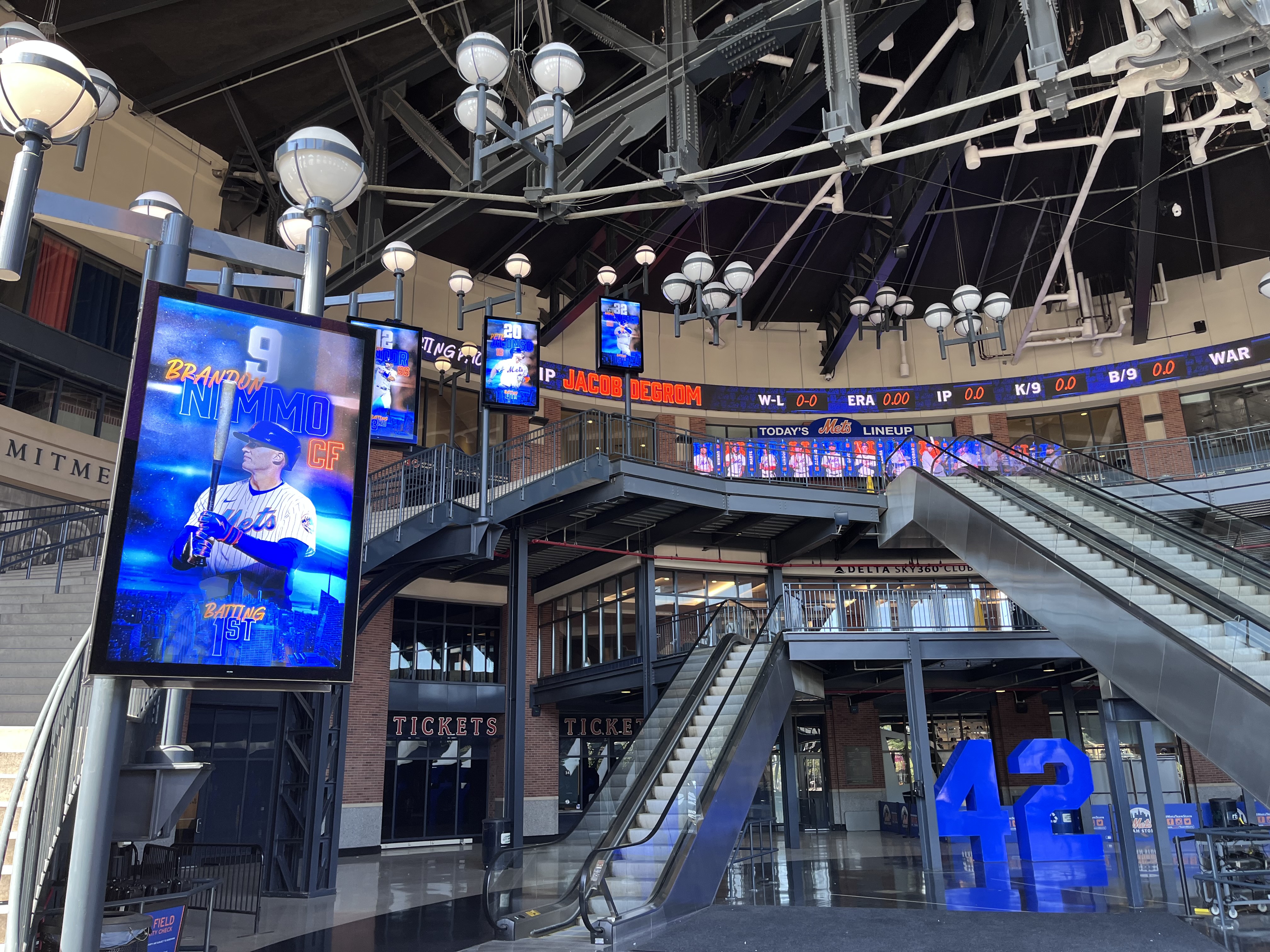
Citi Field and the Mets are changing the league for fans, partners, advertisers, and the team itself. Now, other teams are looking at it and want what the Mets are doing.
The Future of Pro AV
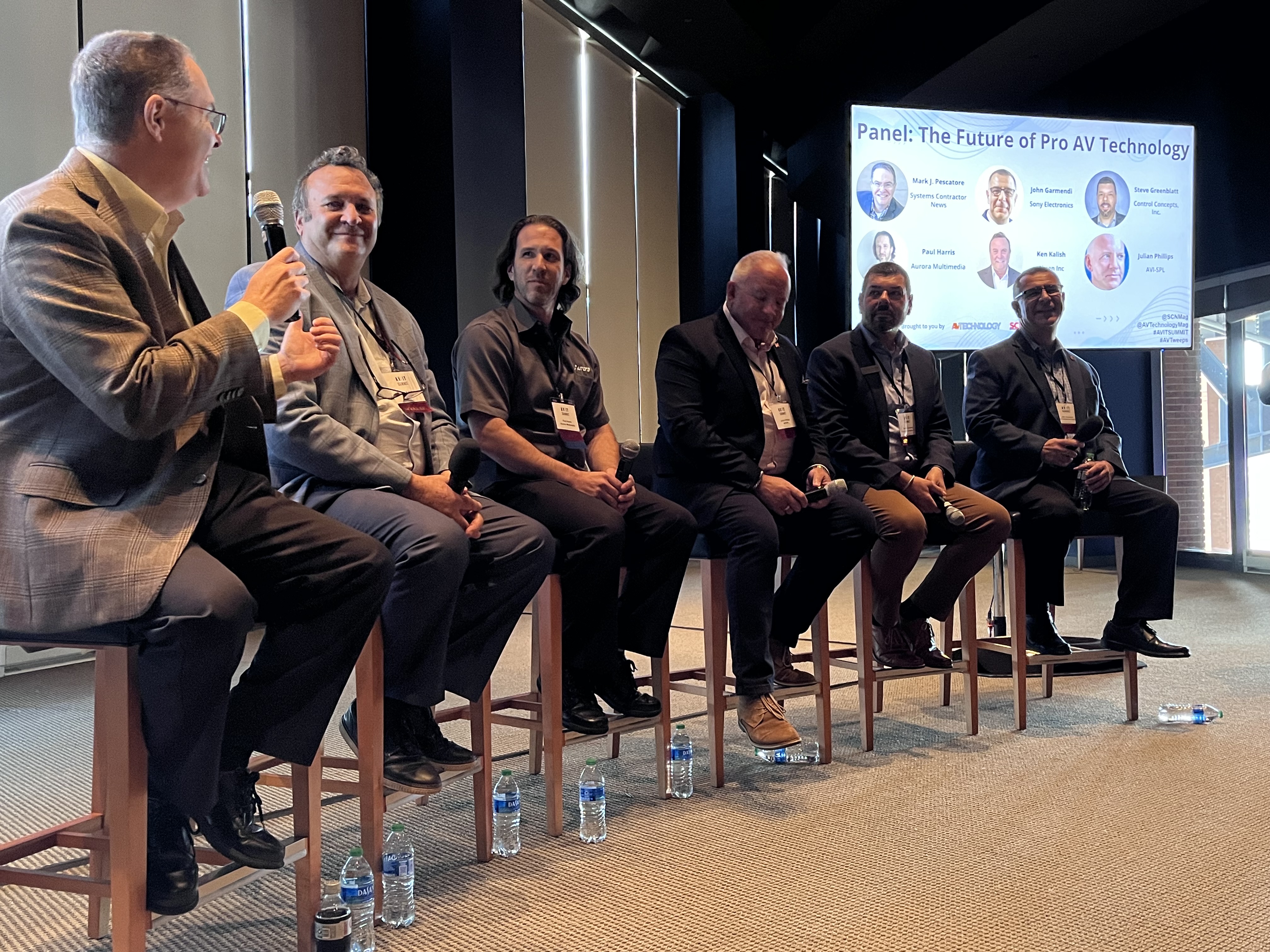
Pescatore led the final panel of the day, and he didn’t have to do much work. He asked one simple question: What is the Future of Pro AV? John Garmendi, senior manager consultant program development/strategic business development manager at Sony, Steve Greenblatt, president and founder of Control Concepts, Paul Harris, chief executive and technology officer at Aurora Multimedia, Ken Kalish, sales director, key accounts at Absen, and Julian Phillips, senior vice president and managing director of XTG at AVI-SPL, had plenty to say.
The conversation started with the recent technologies affecting the hybrid world the pandemic as created. Solutions and services like AI, Microsoft Teams/Zoom/UC, and HDBaseT were, unsurprisingly, immediately provided by the audience.
[AV Network's top stories, product news, and expert insights]
While Phillips said that the cloud is imperative to moving forward, he also harped on a common theme: There has never been a better time to be creative in Pro AV. The pandemic forced the industry to throw out the rulebook, and those in the industry have a chance to move forward even more quickly than ever before. The Pro AV world can find foundational standards that are common for all, but there is opportunity for new solutions to problems with new technology.
Some suggestions provided by this expert panel were not only building products and solutions with built-in intelligibility, but that are interoperable from manufacturer to manufacturer. While communications have been unified with COVID-19, perhaps the products installed can be as well. Perhaps one of the most interesting suggestions was to focus on employee behaviors as well as the technologies being used.
The future of Pro AV seems to be moving toward a virtual, remote world with extended realities in everything from production to education. To get there, the industry will start seeing more diversification and less single-branded systems that can do one thing, with the ability to take a different model to update products to be more compatible without being dependent on a single service/solution.
